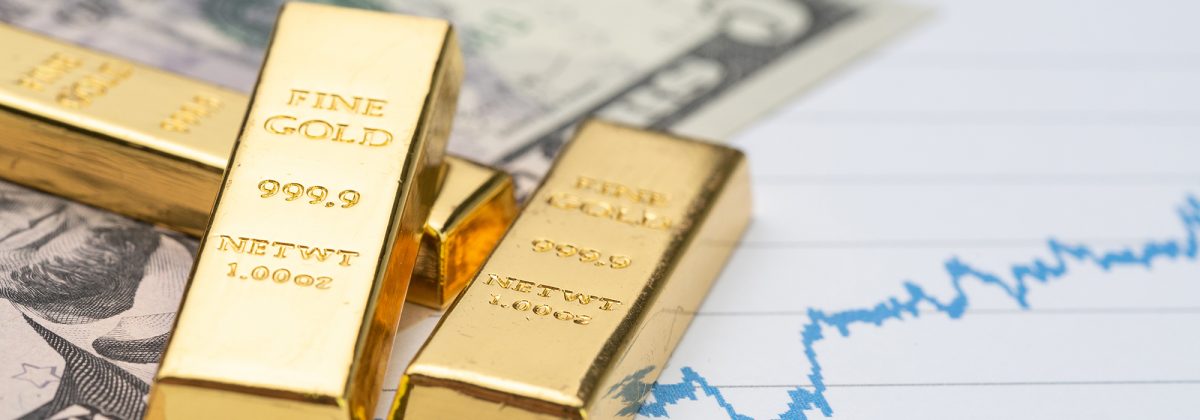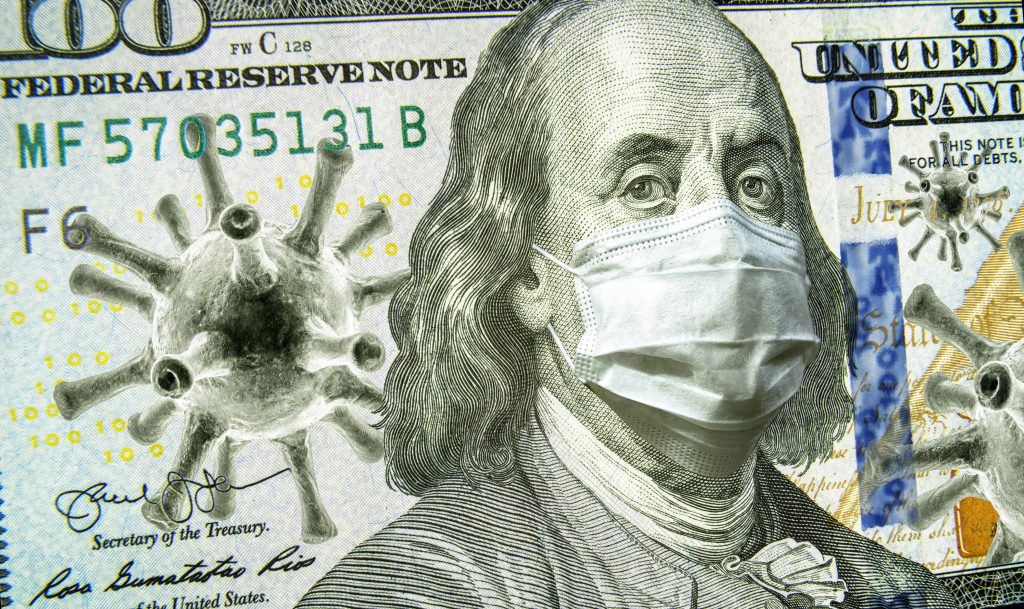Safe-Haven Assets in the Pandemic

The World Health Organisation has categorised Coronavirus (Covid-19) as a pandemic. Despite the doubts about its potential spread and lasting health effects, one thing is certain; its economic impact is massive. In this article, we look at safe-haven assets that you should look into, such as gold and the US dollar.
Covid-19 has led to factories closing which is disrupting supply chains and businesses across the globe. The IMF says that this global spread is crushing any hopes of an economic revival in 2020. Central banks like the US Fed and Bank of Canada have both responded by lowering interest rates. Markets in the Eurozone are expecting the European Central Bank to follow suit. Out of the ordinary monetary policies have led to asset bubbles, zombie banks and companies, while the global debt to GDP ratio is at an extreme 322%.
As a result, investors have resorted to the panic selling of conventional securities and trading instruments, turning instead to safe-haven assets. Here are some safe-haven assets that have surged in value due to the outbreak.
Gold

Gold is considered a safe-haven asset; a precious metal, difficult to procure, limited in nature and it is not impacted by central bank decisions. Gold’s price has reached multi-year highs on account of the coronavirus scare. The precious metal peaked at a seven-year high of $1,703.39 per ounce on March 9th 2020. It remains up 9% YTD, with market volatility propping up its value.
Another reason for the surge in gold price is the 30% crash in oil prices and tumbling stock markets. On March 9th 2020, the Dow Jones fell 2000 points in its biggest one-day decline to date. Oil prices also fell significantly as Russia and Saudi Arabia increased their oil supply. As the demand in China and other countries fall due to decreased economic activity, oil prices will continue to fall.
Gold is a hedge against oil-led inflation. Therefore, expectations of further monetary easing by other central banks along side the falling prices of oil is likely to continue providing support to gold prices.
Yen and Swiss Franc
Japan and Switzerland both have large trade surpluses. Moreover, Switzerland is a politically neutral country, backed by low inflation rates and a strong banking sector. As both nations are large creditors for other countries, traders flock to the Japanese Yen (USD/JPY) and the Swiss Franc (USD/CHF) in times of market uncertainties.
The Yen experienced a strong rally at the beginning of March. In the past 30 years, the JPY has acted as a successful counter-cyclical asset, which depreciates in times of market prosperity and strengthens in case of equity sell-offs and market stress. The AUD/JPY pair has shown a strong propensity in support of trading strategies.
Although investors have started questioning the viability of the Yen as a safe-haven asset in recent years, market analysts say otherwise. In the last 30 years, the Yen has provided on average returns of 45bps whenever the VIX (Volatility Index) has traded above 20. This has been found to be 4 times higher that of the Swiss Franc.
The VIX is expected to continue trading at high levels and the Yen to rise against currencies like the AUD, EUR and CAD. The USD/CHF pair is also expected to react positively to further sell-off, with some consolidation on the upside.
US Dollar

Otherwise known as the world’s reserve currency; USD is used as a hedge against uncertain market conditions. Although the value of the Dollar fell after the Fed slashed interest rates in March 2020, it has managed to rebound due to strong US economic fundamentals. Moreover, there are indications of further stimulus being offered by governments to mitigate the economic impact of Covid-19.
The crisis is pushing central banks worldwide to spend more money which could push the Dollar higher. On March 10th 2020, the US Dollar rose 1.5% due to a drop in oil prices; they are inversely proportional.
Traders are keeping a close eye on the US Presidential race to predict the direction of the Dollar. In addition, the number of cases and deaths due to Covid-19 are increasing rapidly in the US; this will also have an effect on the dollar.
US 10-Year Treasury Bills
Bond prices and government debt are continuing to climb amidst widespread fear and panic. Investors are moving to the US 10-year treasury bills, sending the yield to record lows. The yield on the benchmark 10-year T-bill declined to 0.67% on March 6th 2020. On the same day, the 30-year treasury bonds fell to a new low of 1.259%, while the 5-year yield fell to 0.532%. If matters worsen the Fed may cut rates again, meaning that short-term rates could be heading towards zero.
Low-yield bonds are good for investors who want to hedge a mixed portfolio, by keeping some of their investments in virtually risk-free assets. However, many analysts suggest that rather than locking up investments in a low-yielding instrument for 10 to 30 years, investors could instead build a diversified portfolio of stocks and bonds.
In the long run, the virus should be contained and businesses will be back to normal. Therefore, a certificate of deposit of one year may be better than long-term treasury bills. However, US treasury bills are one of the most trusted instruments in the world. This is due to the resilience of the US economy and the timely payment history of interests by the US government.
At the moment, it is too early to predict the economic impact of the coronavirus as governments are limited in terms of measures to revive their economies. This will mean that interest rates will stay low, with many in the negative zone due to a strong focus on tax cuts and stimulus programs. Traders will need to consider their investments after careful analysis of the market and future goals.
Reference Links
- https://seekingalpha.com/article/4328591-fxy-dont-lose-faith-on-yen
- https://www.cnbc.com/2020/03/10/forex-markets-dollar-oil-in-focus.html
- https://www.ccn.com/who-would-invest-in-a-10-year-treasury-bond-with-such-a-low-yield/
- https://www.cnbc.com/2020/03/09/forex-markets-yen-oil-exposed-currencies-in-focus.html
- https://markets.businessinsider.com/news/stocks/safe-haven-assets-surging-new-highs-coronavirus-panic-stocks-falling-2020-3-1028972161
- https://www.cnbc.com/2020/03/06/10-year-treasury-yield-falls-below-0point83percent-as-coronavirus-rocks-markets.html
- https://www.worldometers.info/coronavirus/







